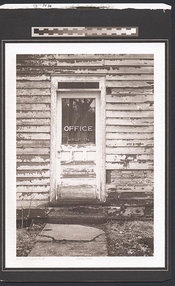Hi Frank,
I took the liberty of revising your comment into 3 important rules and I agree wholeheartedly with everything you wrote!
My writing was ambiguous and sloppy. Let me see if I can do better. Maybe this:
I don't worry about perfectly following some "gold standard" cyanotype formula
to start with, because what is important is to stay consistent between prints.
Now, way more detail than you want:
From previous experience making cyanotypes on this paper, I've learned that ratios of AFC to Pot Ferri between 20:8 and 20:10 all produce good and similar results, and this ratio is not a highly critical factor. However, this paper buckles a little when it gets wet, and with too much total liquid it can puddle in the "valleys" while drying. This can produce defects in the final print ( presumably by soaking through into the alkaline internal sizing ), and
really is a critical factor. I wasn't sure exactly how many total drops to use for this size negative ( 40 is ballpark, but needed to dial it in... ). As I made the 1st 3 prints, I reduced the total number of drops while keeping the ratio of AFC to pot ferri and the concentrations the same.
So the 16:18 drops wasn't a haphazard guess, but the end result of reducing the total volume ( 1 variable! ) while keeping everything else the same. This was only possible because I have pencil notes on the back of each print. Only printing on weekends, I wouldn't even be able to remember how many drops I used from one print to the next, not to mention If I want to do this again next year! I'd never remember anything without those notes!
TLDR: I don't think it matters much which cyanotype "recipe" you start with, and I don't think there is a "best gold standard one", but I sure agree with Frank that it's important to stay consistent, only change one thing at a time, and keep good notes.
That said, there's also a balance. Being creative and enjoying the magic of a print ( opening the printing frame to see what you have really is a special kind of magic! ) or getting too immersed in technical details. To me, cyanotype has a kind of carefree freedom and I'm more likely to "put it out in the sun and let's see what happens!". It's cheap and non-toxic and relatively simple and forgiving, so you won't waste a lot of time and money if you play around with it. I guess I'd say "carefree" but not "haphazard"








 You ought to try it.
You ought to try it.

